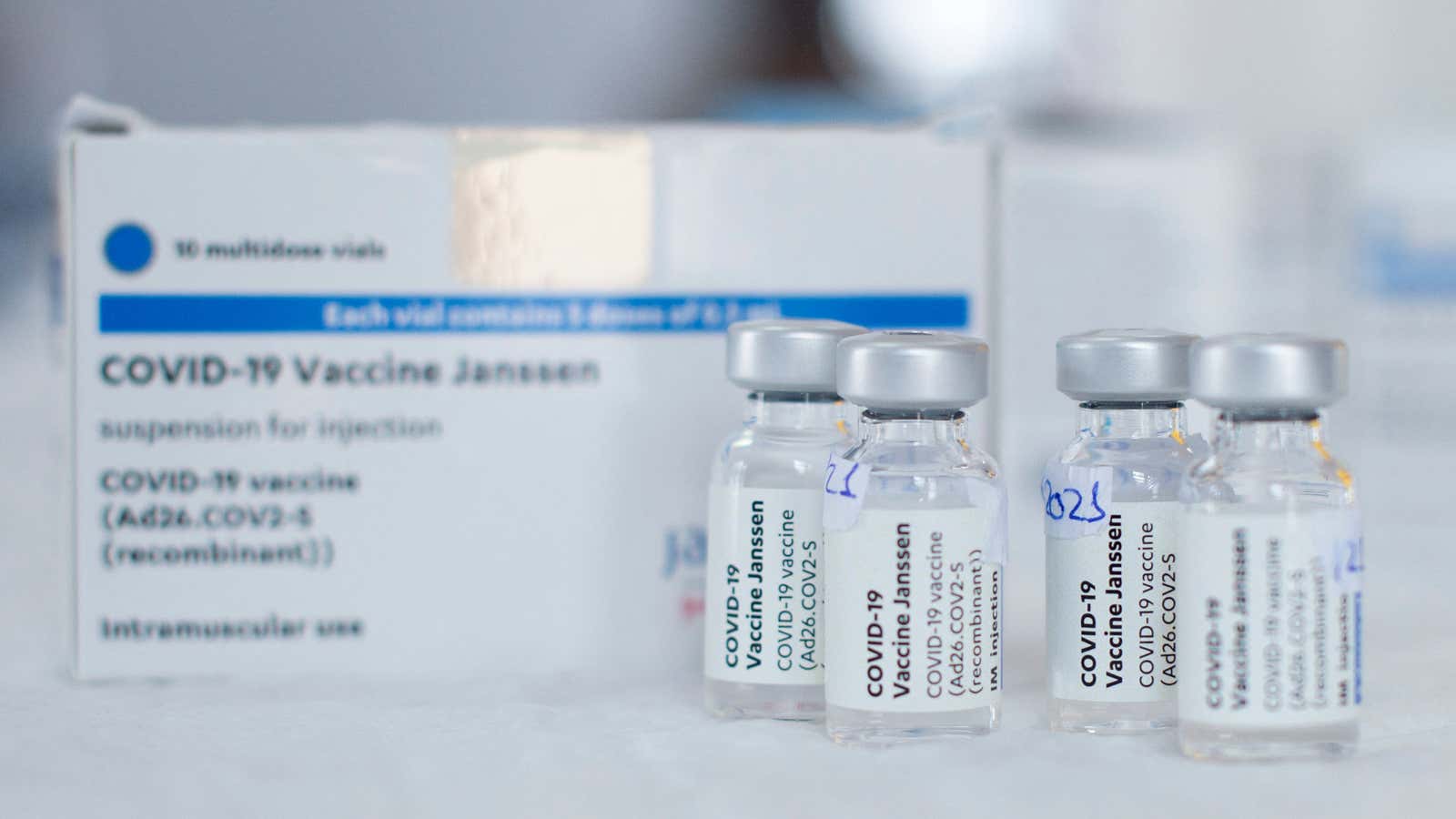J&J Vaccine Returns

The pause in the Johnson & Johnson / Janssen COVID-19 vaccine appears to have come to an end. The CDC’s independent advisory group, ACIP , voted today to re-recommend the vaccine for everyone 18 and older, even though there is a very small risk of blood clots in women under 50. Vaccinations are expected to resume early next week.
What’s the new recommendation?
The new recommendation is the same as the old one: J&J vaccine is recommended for all adults 18 and older. The FDA will include a warning about the possibility of blood clots in the vaccine information booklet.
If you are in a group that is more likely to develop blood clots – women under 50 – you may prefer a different vaccine over J&J, but that is up to you. All three vaccines are still legal and are recommended for all adults, regardless of gender.
What do we know about blood clots?
The hiatus, which began last week , was caused by six cases of a rare type of blood clot. This condition, which regulators call TTS for “thrombosis with thrombocytopenia syndrome,” is an unusual combination of blood clots that can occur in the brain along with a low platelet count. (Blood clots in the brain are known as venous sinus thrombosis, or CVST, but according to today’s updates, they can also occur in other parts of the body.) The condition is vanishingly rare in the general population but has occurred in a small number of people who have done shot by J&J. The condition is not related to Pfizer or Moderna vaccines.
Symptoms of TTS begin six or more days after vaccination and include severe headache, leg pain, abdominal pain, and shortness of breath. (Headache for several days after vaccinations is common as part of the response to the vaccine and is not a sign of TTS.) If you experience these symptoms and have had J&J vaccine in the past few weeks, go to the emergency room and make sure to tell them when you were vaccinated.
In the update provided today , the number of known cases has increased to 15, 13 of which occurred in women aged 18 to 49 and two in women aged 50 and over. This increases the risk, which was originally one in a million, for seven women in a million in this age group. (One man had TTS in a clinical trial before the vaccine was approved, and it is possible that as more cases become known, some may end up in men.)
Outside of this situation, blood clots are more common in women, and birth control pills and pregnancy are risk factors for more common types of clots. But among these people with TTS, only two used oral contraceptives, and none of them had a recent pregnancy. The risk of TTS after the J&J vaccine is less than the risk of blood clots from birth control, and also less than the risk of blood clots from COVID-19.
One thing that is unusual about these clots is that the usual treatment for blood clots, heparin, can be dangerous for patients, so healthcare providers should monitor the condition closely and know not to use this treatment. In the update, we learned that six patients were treated with heparin, but all were hospitalized prior to the CDC warning last week. After the warning, no one was treated with heparin. This suggests that efforts to spread awareness about TTS have helped providers make the right calls.
Why did they make this decision?
The group spent most of the day discussing the pros and cons of changing recommendations. One problem was that the J&J vaccine is preferred for reaching homeless people, domestic residents and migrants (because it is easy to store at refrigerator temperature and people do not need to return for a second appointment). If the panel were to recommend the J&J vaccine for men only, it would mean that this outreach effort would not have been able to vaccinate families or couples if they had not started stockpiling two different vaccines with different storage requirements. Here are screenshots of the pros and cons of several options discussed in the panel:
A computer model of the consequences of a vaccine recommendation (or refusal) estimated that over the next six months, resuming vaccinations would likely result in 9.8 million J&J vaccinations, causing 26 TTS cases, but averting 1,435 deaths and 2,236 ICU admissions. This model assumed that people who could not get J&J would not receive any vaccine at all, which is probably not the case, but it provides an idea of the risks and benefits of such a solution.
The panel ended up making a difficult decision, but the decision for individuals is a little easier: all three vaccines are effective, and all three are relatively safe. TTS is still a rare disease and we assume more than 7 risks per million for other vaccines, drugs, and risks of daily life. However, if this is a greater risk than you would like, seek a vaccine from Pfizer or Moderna.